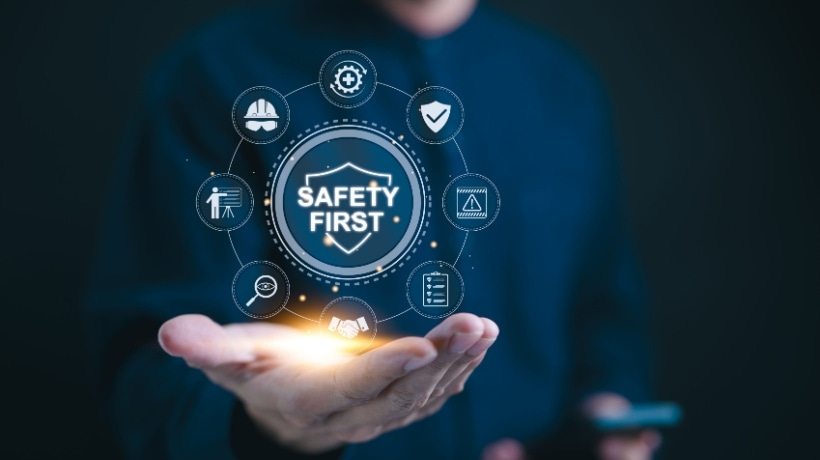Making Safety Culture Training Stick
Workplace safety is not just about compliance, it is about creating a culture where safety becomes an intrinsic part of employees' daily activities. However, traditional safety culture training often fails to engage employees, reducing its effectiveness.
Blended learning, which integrates eLearning, Instructor-Led Training (ILT), on-the-job training (OTJ), and eLearning including modalities such as microlearning or gamification, presents a more effective approach. In this article, we will explore how blended learning fosters a robust safety culture while ensuring greater retention and application of safety practices.
Developing Safety Culture Training With Blended Learning
Ensuring workplace safety is a critical responsibility for organizations. However, traditional safety training methods, often consisting of lengthy presentations and text-heavy manuals, fail to capture employees' attention. As a result, compliance becomes a mere formality rather than a deeply embedded workplace practice.
A well-structured blended learning approach can change this dynamic. For instance, a manufacturing firm struggling with low engagement in safety training revamped its approach by introducing scenario-based simulations and microlearning. Employees became more engaged, and safety compliance improved significantly.
So, how can organizations make safety training both engaging and effective? Let's explore key strategies that can drive a strong safety culture.
1. Interactive Scenario-Based Learning: Making Safety Training Engaging
Safety training is most effective when it simulates real-world situations. Scenario-based learning immerses employees in lifelike environments where they must apply safety protocols in a risk-free setting.
For example, a construction company that faced challenges with hazard identification introduced a virtual simulation. Employees participated in an interactive exercise where they had to spot potential dangers in a simulated work environment. One worker noted, "I hadn't realized how many hazards I overlooked daily—this exercise changed my perspective."
When training is realistic and experiential, employees internalize safety procedures more effectively.
2. Microlearning: Delivering Safety Training In Bite-Sized Modules
Employees often find it difficult to allocate extended time for training. Microlearning, which delivers concise and focused safety lessons, helps address this challenge.
An IT company implemented microlearning for cybersecurity and emergency response training. Employees accessed short, interactive videos that provided crucial safety information in just a few minutes. One employee remarked, "I learned more from a five-minute session than I did from a full-length training course."
By integrating microlearning, organizations can ensure employees receive essential safety training without disrupting their workflow.
3. On-The-Job Training And Mentorship: Reinforcing Safety Practices
Reading about safety procedures is not enough; employees must practice them in real-world scenarios. OTJ, paired with mentorship, reinforces training through hands-on experience.
A warehouse experiencing frequent lifting-related injuries introduced a structured mentorship program. Experienced employees guided new hires through correct lifting techniques, leading to a marked decrease in injuries. One trainee shared, "Having a mentor demonstrate the right technique in a real setting was far more effective than reading a manual."
Encouraging peer-to-peer learning ensures safety practices are consistently applied in daily operations.
4. Gamification And Rewards: Encouraging Employee Participation
Incorporating gamification elements—such as quizzes, leaderboards, and rewards—enhances engagement and motivates employees to take safety training seriously.
A logistics company introduced a gamified approach to hazard identification, where employees earned points for spotting and reporting safety risks. Within months, hazard reporting increased by 35%, and employees became more proactive in maintaining a safe workplace.
Gamification transforms safety training from a mandatory obligation into an interactive and rewarding experience.
5. Mobile And Just-In-Time Learning: Accessing Safety Resources Instantly
Providing employees with instant access to safety resources enhances compliance and reinforces learning. Mobile learning and just-in-time training ensure employees can retrieve safety information when they need it most.
A global construction firm implemented a mobile safety application featuring checklists and emergency protocols. Workers accessed the app on-site, allowing them to quickly refresh their knowledge on key safety practices. This real-time accessibility improved compliance and reduced workplace incidents.
When employees have safety information at their fingertips, they are more likely to apply it effectively.
Case Study: Reducing Workplace Incidents In Manufacturing
A global energy consultancy firm struggled with increasing accident rates due to a lack of engagement in traditional safety training programs. We proposed a blended learning solution consisting of eLearning modules and virtual workshops hosted on KREDO Learning Platform to address this challenge.
Solution
- Customized blended learning modules: Short eLearning modules introduced safety fundamentals using animations, voiceovers, and interactive exercises. These were complemented by Virtual Instructor-Led Training (VILT) sessions, which featured real-time polls, group discussions, and scenario-based exercises. This combination ensured flexibility, consistency, and engagement for employees across diverse roles and locations.
- Mobile accessibility: Training materials were accessible via mobile devices through KREDO, enabling employees to learn anytime and anywhere. This on-demand availability allowed just-in-time learning and ensured seamless integration into employees' workflows.
- Interactive content: The VILT sessions incorporated gamification elements like quizzes and role-playing exercises to enhance engagement. Employees participated in simulations and choose-your-own-adventure scenarios to practice hazard recognition and decision making in risk-free environments.
- Performance tracking: KREDO provided real-time tracking of learner progress and performance. Managers could monitor metrics, identify gaps, and offer targeted support. This approach resulted in a 40% reduction in safety violations, improved knowledge retention, and proactive reporting of safety concerns.
The results were outstanding:
- There was a 40% reduction in safety violations.
- Employees proactively reported safety concerns, preventing potential incidents.
- Higher training completion rates and improved knowledge retention.
Conclusion
Safety training is essential, but it must be engaging and practical to be effective. A blended learning approach—incorporating interactive scenarios, microlearning, on-the-job training, gamification, and mobile learning—ensures employees internalize and apply safety procedures effectively.
At Tesseract Learning, we specialize in designing innovative learning solutions that enhance workplace safety. Our learning platform, KREDO, helps organizations deliver engaging and impactful training that fosters a strong safety culture.
To learn more about how we can support your organization's safety training initiatives, visit Tesseract Learning.










